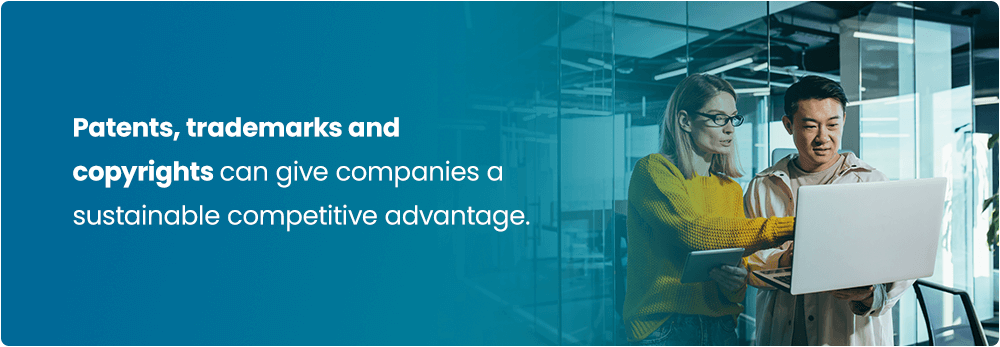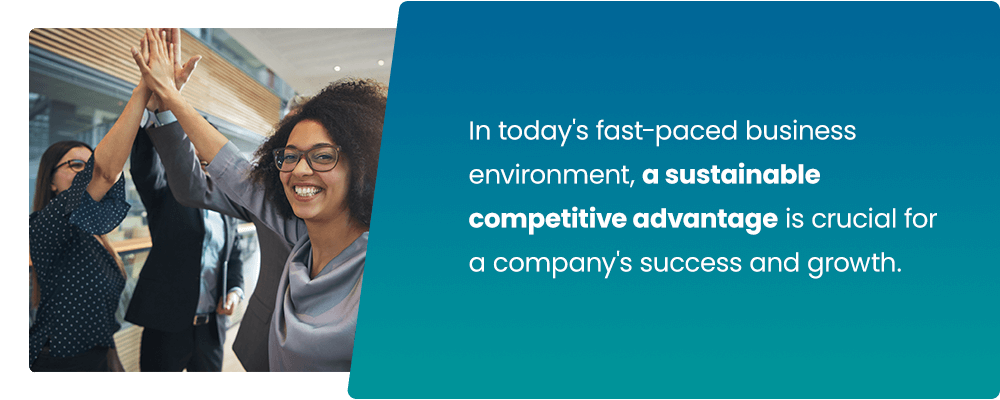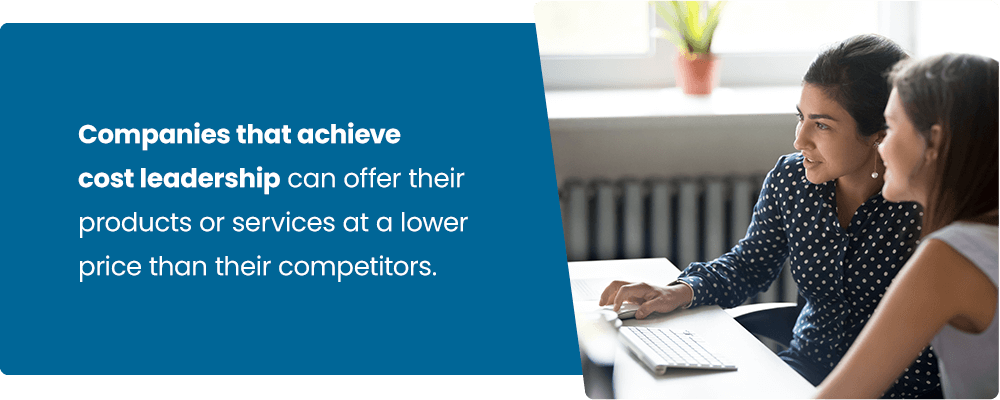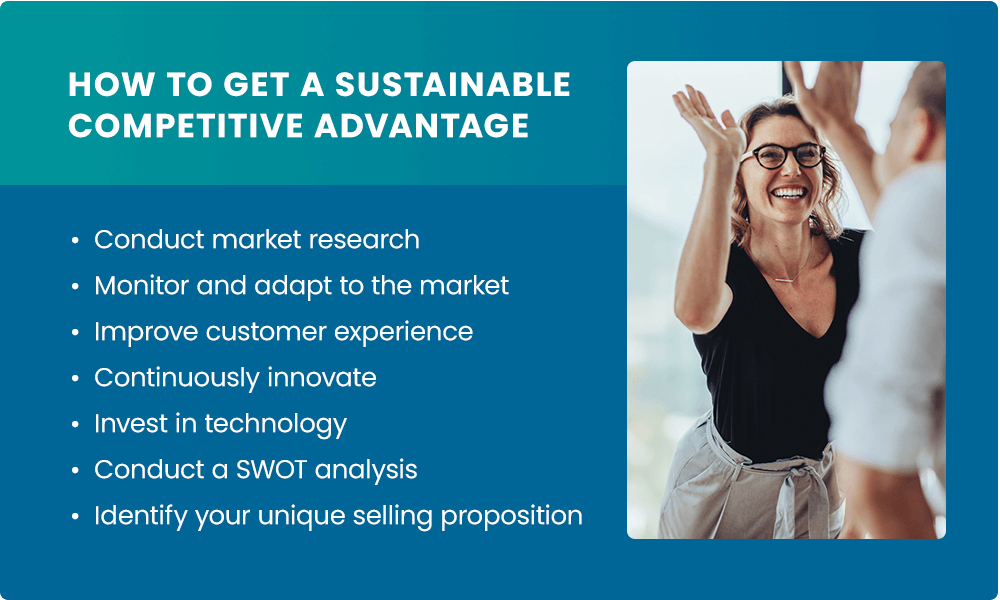By definition, a sustainable competitive advantage refers to a company’s unique superiority over its competitors, allowing it to maintain its leading position in the market. This upper hand can stem from various sources, including branding, customer service, technology, product design, and distribution channels. The sustainability factor comes from the fact that it takes significant effort to imitate or duplicate. Additionally, it should be durable, and not vulnerable to market changes or new entrants.
What makes a competitive advantage sustainable? A company that has patented a unique technology may have this enviable edge because it is challenging to replicate without infringing on the patent. A business with a good brand reputation may also have a sustainable advantage, as it is difficult for competitors to match recognition and loyalty.
A sustainable competitive advantage is essential in determining a company’s long-term success in the market. Businesses that lack this edge are more likely to be vulnerable to changing demands and face increased competition from new entrants. A company’s strategy should leverage its sustainable competitive advantage, allowing it to achieve a unique position in the market, create value for its customers, and drive profits.
In This Article
- Examples of Sustainable Competitive Advantages
- Factors Influencing a Company’s Sustainable Competitive Advantage
- Benefits of a Sustainable Competitive Advantage
- Types of Sustainable Competitive Advantages
- How to Get a Sustainable Competitive Advantage
- How AchieveIt Can Help
Examples of Sustainable Competitive Advantages

Here are a few instances of sustainable competitive advantages.
- Strong brand reputation: Customers are more likely to choose companies like Coca-Cola, Nike and Apple because of their positive associations and perceptions.
- Intellectual property: Patents, trademarks and copyrights can give companies a sustainable competitive advantage. For example, pharmaceutical companies with patents on unique medicines can maintain their market position by preventing competitors from producing generic versions.
- Economies of scale: Companies with large production capacities can often manufacture products at a lower cost than their competitors. Walmart is an excellent example of a business that has leveraged economies of scale to maintain its competitive position.
- Unique distribution channels: Companies like Amazon have developed specialized distribution channels that allow them to reach customers in new and innovative ways.
- Strong relationships with suppliers: Companies with strong relationships can secure better prices and ensure a steady supply of raw materials, providing a competitive advantage. For example, automakers that have established long-standing connections with car parts suppliers can maintain their competitive position by securing lower costs and stable supplies.
- Excellent customer service: Providing consistently excellent customer service is an ideal way for a business to differentiate itself from competitors. Customers appreciate companies that answer their inquiries or listen to their concerns about a product or service. A quick response time may help overcome people’s concerns or reservations about purchasing.
Factors Influencing a Company’s Sustainable Competitive Advantage
Businesses must stay attuned to changes in their industry and the broader market to maintain their position. These are a few variables that can influence a company’s sustainable competitive advantage.
- Industry structure: Entry barriers, customer loyalty and the number of competitors can influence a company’s sustainable competitive advantage. For example, businesses operating in highly competitive industries with low entry barriers may need help staying ahead.
- Market trends: Business leaders must keep their fingers on the pulse of market changes and consumer preferences. For example, a business that fails to adapt to technological advances or customer desires may lose its edge.
- Government regulations: Regulatory authorities can influence a company’s competitive advantage by affecting its ability to access specific markets or engage in specialized business practices. For instance, companies operating in heavily regulated industries may face increased competition due to restrictions on their capacity to innovate or enter new markets.
- Technological advancements: Technology can significantly affect a company’s competitive advantage. Companies adopting innovations sooner than their competitors can gain the upper hand. Comparatively, businesses that fall behind may find it hard to keep up.
- Company culture: Culture and values can play a role in maintaining a sustainable competitive advantage. Companies that foster a positive and innovative atmosphere are more likely to attract and retain top talent.
- Financial resources: Companies with a higher budget can invest in research and development, marketing and other initiatives to enhance their competitive advantage. Conversely, companies with limited financial resources may need help to maintain their market position.
Benefits of a Sustainable Competitive Advantage

Businesses that provide products or services in dog-eat-dog market categories, such as technology or automobile manufacturing, need to stay several steps ahead of the pack. In today’s fast-paced business environment, a sustainable competitive advantage is crucial for a company’s success and growth.
There are several benefits of having a sustainable competitive advantage in business.
- Market power: A sustainable competitive advantage can result in a business differentiating itself from its competitors and gaining control of an entire market sector.
- New customers: By consistently delivering high-quality products and services, a company can establish a strong brand image and reputation, giving them a significant edge in attracting and retaining customers.
- Customer loyalty: When a business establishes a reputation for delivering high-quality products or services, they can build a loyal customer base over time.
- Increased profitability: A sustainable competitive advantage may lead to higher profits, as a company can charge premium prices for its products and services or offer lower costs than its competitors.
- Better protection against competitors: Businesses with a sustainable competitive advantage minimize the risk of losing market share.
Types of Sustainable Competitive Advantages
Sustainable competitive advantages are essential for a company’s long-term success. Businesses can achieve this goal through differentiation, cost leadership, focus or a combination of these strategies.
Differentiation
Differentiation involves creating a unique value proposition. High-quality products, intellectual property, a distinct brand image, inventive marketing tactics or an exceptional customer experience can all be specialty areas. Companies that set themselves apart in specific ways can command a premium price for their products or services, as people are willing to pay more for the added value. Examples of differentiated companies include Whole Foods, which promotes a greener lifestyle with a local feel, and Zappos, which has built a reputation for their customer-centric culture.
The primary goal of executing a differentiation strategy is to gain a competitive advantage. A company will typically do this by examining its strengths and limitations, customer demands and the total value it can deliver. Businesses can pursue two differentiation strategies.
- Broad: This approach involves building a business or brand that is distinct from its competitors in some manner that will appeal to a broad range of customers.
- Focused: This method involves providing distinctive qualities while meeting the needs of a specialized or niche market.
Cost Leadership

Cost leadership involves becoming the low-cost producer in an industry. Pricing power is a term used to describe companies that may reduce expenses and provide cheaper rates to their clients. This strategy’s viability hinges on a steady cash flow. Companies that achieve cost leadership can offer their products or services at a lower price than their competitors, making them more attractive to cost-conscious consumers. Walmart is an excellent example of a company that has achieved cost leadership through its economies of scale and efficient supply chain management.
Though you may see the terms used interchangeably, cost leadership and price leadership are different. Price leadership refers to a strategy that gives the lowest pricing in an industry, whereas cost leadership means having the least operational expenses. While offering comparable low pricing, a price leader may be less lucrative than a cost leader. In some cases, companies may outperform the competition by combining low operating costs with affordable prices.
Focus
Focus serves a narrow market segment with specialized products or services. Companies that concentrate on a particular niche can achieve a sustainable competitive advantage by being the best at serving that segment. For example, a company specializing in high-end, luxury goods for a wealthy clientele may have a sustainable advantage over competitors targeting a broader market segment.
Focus tactics fall into two categories. One strives to outperform the competition by being the lowest-cost provider, while the other seeks to win via differentiation.
- Cost: This approach applies the cost leadership strategy’s core principle to a specific market area. You may provide a lower price than your competitors and leverage this advantage to build your market share by targeting a sector and using an intelligent marketing strategy to pursue it.
- Differentiation: This concept focuses on a single market sector rather than the entire field. A luxury electric car would be a differentiation emphasis strategy if it provided significant benefits in quality and functionality that justified the high pricing.
Each of these sustainable competitive advantages has distinct advantages and disadvantages. Differentiation can be challenging because it requires a company to create a unique value proposition that resonates with customers. Cost leadership is an ambitious goal because it requires optimizing operations and controlling costs to produce products or services at a lower price than your competitors. Focus can limit a company’s growth potential by restricting it to a narrow market segment. Still, it can provide a detailed understanding of your target customers’ needs and preferences.
How to Get a Sustainable Competitive Advantage

Whether you’re a startup business owner or the CEO of a large corporation, learning how to achieve a sustainable competitive advantage is critical to your company’s long-term growth and success. However, it requires careful planning, execution and continuous improvement. Here are the steps to consider for gaining a sustained competitive advantage.
- Conduct market research: Collect data and analytics and try to understand your target market and your customers’ needs and preferences. This information can help you develop products and services that give you a competitive edge. Additionally, it’s critical for increasing profit margins and staying ahead of the competition.
- Monitor and adapt to the market: Stay abreast of changes and trends in your industry, and modify your business strategy accordingly. Being nimble can help you stay on top in an evolving marketplace.
- Improve customer experience: Brand loyalty is critical to a company’s longevity. One of the most effective strategies to enhance retention is constantly adapting your customer experience to match requests and expectations.
- Continuously innovate: Innovating and improving your products and services can help you maintain your edge. You can achieve this by regularly seeking customer feedback and using it to improve. Though this approach relies on consistent cash flow, investing in new technology and developing new items is one of the best ways to conquer the competition.
- Invest in technology: Tech can help you improve your processes and operations, reduce costs and increase efficiency. By getting ahead of the curve, you can gain a significant advantage over your competitors.
- Conduct a SWOT analysis: Start by conducting a SWOT analysis to define your strengths, weaknesses, opportunities and threats in the market.
- Identify your unique selling proposition: Based on the results of your SWOT analysis, determine what makes your business unique and what sets it apart from the rest. Then, market your USP to your customers.
Achieving a sustainable competitive advantage takes effort and commitment, but you can do it by following these steps. By defining a USP, using technology, continuously innovating and monitoring the market, businesses can gain and maintain a sustainable competitive advantage.
How AchieveIt Can Help
Ready to take the next step in strategic planning and strategy execution?
The 2025 State of Strategy Execution Report by AchieveIt is here to guide you through the problems and opportunities currently facing organizational leaders with key insights and recommendations on how to improve.
Bridge the gap between your business strategies and the execution of these strategies with AchieveIt. According to Harvard Business Review, McKenzie, Boston Consulting Group and other studies, 60 to 90% of plans fail to deliver their projected goals. Strategic planning, strategy implementation and integrated plan management are challenging tasks.
Transform your strategic planning and execution process with AchieveIt’s strategic planning software designed specifically for your organization, regardless of the planning style, size or industry. Organizations must constantly evolve and adjust to meet market demands. Business transformation and change management software will assist in planning your next steps. With AchieveIt, you’ll get the real-time information you need to better anticipate and alter your strategies to guarantee success thanks to data reporting, visualization, analysis and alerts.
Request a demo to understand why business leaders rely on AchieveIt.



